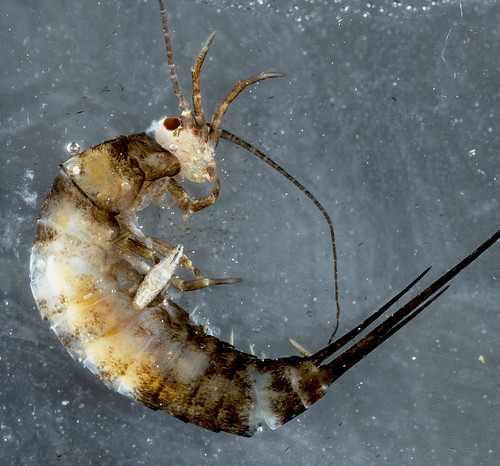The fall has arrived and with it the coolest insects: parasitoids. Really, the fall is the best time of the year to collect parasitoids, whose populations reach their peaks in September and October, well, at least concerning ceraphronoids and platygastroids (my favorite groups of course :)).
I laid down 10 yellow pan traps (YPT) in my garden last weekend in order to collect some fresh specimens to show insects to my sons and their friends (well, parents of the 21st century try to employ everything to get pupils away from those really annoying smartphones and tablets that typically fill these small guys’ hands and heads), and of course to see if there are any interesting ceraphs and scelionids in our garden. Besides the surprisingly high number of ceraphs the 10 YPTs have caught quite a few other insects, including a reasonable number of other parasitic hymenopterans and 3 jumping bristletails (Archaeognatha) (the image below shows the ceraphronoid specimens, a braconid wasp, and … something else).

While observing YPT specimens in glycerine, my son’s friend, Jack, exclaimed: “Something is still alive and moving here!”

Indeed, there was something moving inside the dead bodies of two jumping bristletail specimens. We have then spent some minutes with the boys watching the malachid and observing as a larva just chewing out itself trough the bristletail cuticle and leaving the dead body.

“Horror” Jack smiles widely and you see the excitement on his face. Well, it is harder and harder to get the attention of our kids on things that are not smartphone dependent. This 2–3 mm long phorid (we guess the specimen on the image below is a phorid larva) certainly got the attention of a 9 year old.

But how did it get inside the bristletail? Actually inside 3 bristletails? It would be great to think that they are parasitoids that specifically lay their eggs in Archaeognatha, but the truth is perhaps simpler. Phorids are insane, in terms of their taste. Some of them simply lay their eggs in anything that has started decomposing. The bristletails in the trap were certainly decomposing.
There is another specimen in the collected material that has also a really peculiar biology. If we take a closer look on the first image of today’s post we will see a small insect attached to the wing of the braconid wasp.

A small ripiphorid larva is attached on the wing margin using its legs and perhaps the tip of its abdomen. Ripiphorids can often be found riding acuelate hymenopterans, but I have never seen them on an ichneumonoid wasp.

According to the weather forecast the following weekend is going to be relatively warm and sunny. How many YPTs should I lay in my garden?
Such an interesting tiny world. I think my preschool students would love this.
Cheers,
Patti